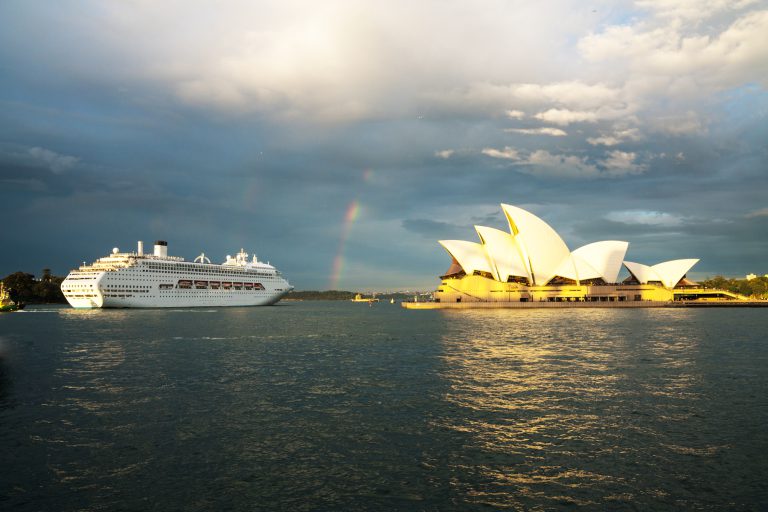More than 1.34 million Australians took to the seas for a cruise holiday last year – making it what the industry head Joel Katz described as “the quintessential modern Australian holiday”.
The good news is that the numbers were more than 2.5 times the rate of Australian inbound holiday arrives.
But the MD of Cruise Lines International Association Australasia (CLIA) also pointed out that growth had slowed dramatically to 4.4 per cent because of infrastructure constraints limiting the number of ships berthing in Sydney.
That’s a fall in growth of some 16%, affecting jobs and tourism numbers.
Outgoing CLIA chair Steve Odell of Norwegian Cruise Lines said Sydney harbour was “full” – and revealed his own line’s 2019/20 season with the Norwegian Jewel almost had to be called off because berths at the right time could not be found.
Luckily, another line released space to save the American line’s important third season in Australia.
Both men agreed a resolution of the number of berths that could be found in the harbour was long overdue. But they said the intervention of the Federal Government’s grant for further searches for a solution gave hope that a solution could be on the way.
And Philip Holliday, COO of Sydney Port, told Cruise Passenger the search for alternatives was now going full speed ahead with Port Botany and a mysterious option he would not name on the agenda. The Naval Base at Garden Island remains in contention, even though the Navy is showing few signs of co-operating.
The cruise industry now concedes that there is no virtually no chance of achieving the target articulated by Carnival Cruise Lines executive chair Ann Sherry of two million cruisers by 2020.
Still, 2017 was a creditable performance with market penetration up at 5.7 per cent, still the highest in the world and meaning one in 18 Australians took a cruise – well above America, UK and Germany and making Australia the fourth largest cruise country.
But there was no hiding the disappointment that Sydney Harbour was constraining growth.
“It’s the old chestnut – cruise infrastructure problems. We have reached capacity, the warning bells are sounding louder than ever. We are facing constraints in growth.
“Demand for cruising is as high as ever but we have to ensure better infrastructure,” said Mr Odell, senior vice president and managing director of NCL Asia Pacific.
“The best way to future-proof cruise tourism in Australia is to resolve infrastructure constraints and ensure the right regulatory settings to allow for more cruising to Australian ports,” said Mr Katz.
South Pacific and Australia continued to be the two most popular cruise destinations with 471,000 heading to the South Pacific and 451,000 cruising locally around Australia.
Asia topped the list as the most popular long-haul fly-cruise destination attracting 97,000 Australians, followed by the Mediterranean 61,000 and Alaska 37,000.
The average Australian passenger was 49 years old who cruised for 9.1 days.
Shorter cruise itineraries to the South Pacific, Caribbean and Australia appealed to younger cruisers aged between 44 and 47 years of age while middle-aged cruisers in their fifties were more attracted to cruise to New Zealand, the Mediterranean and Asia.
Older cruisers in their 60s tended to go for longer voyages in Northern Europe, Alaska, the Polar regions, Transatlantic crossings and world cruises.
Carnival Australia President Sture Myrmell has been appointed the new chairman of CLIA, taking over from Mr Odell.
www.cruising.org










I am Sure that ADELAIDE CAN TAKE MORE CRUISE SHIP VISITS,GIVE IT A GO.
There is plenty of room at the Fremantle Overseas Passenger Terminal and in the past few years the number of ship visits has DRASTICALLY dropped much to the chagrin of us Westos now forced to fly to Sydney or Brisbane. There is plenty on offer in all of WA, its time the Cruise Companies took advantage of the delights on offer in WA